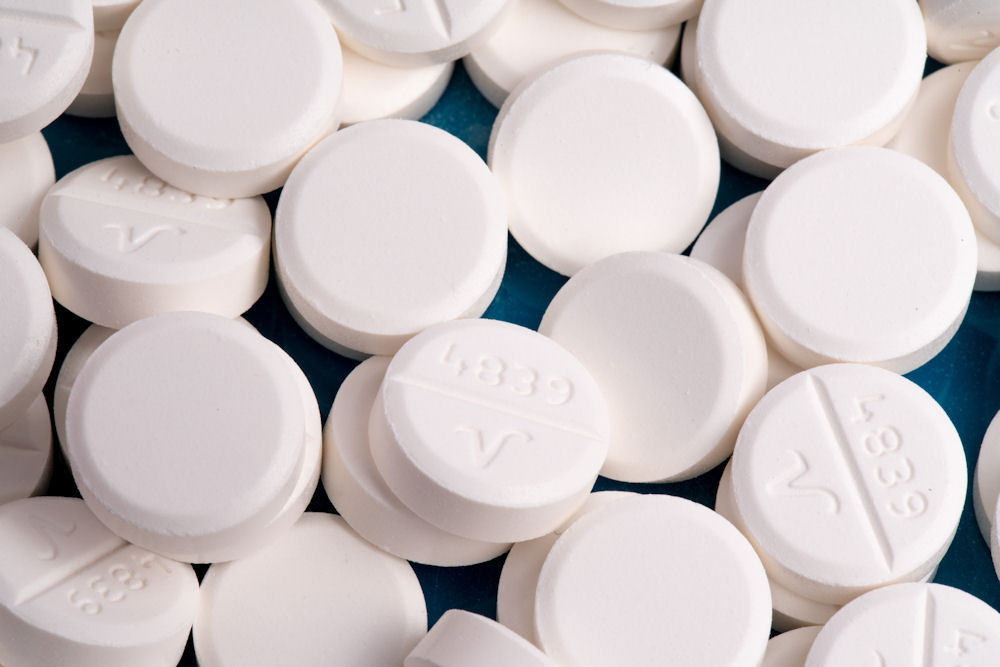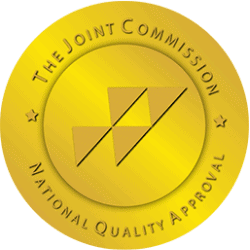It’s no secret that opioid abuse is the leading cause of overdose-related deaths in the United States. The opioid epidemic has been happening for years. Oftentimes, these tragedies occur in large part due to a lack of knowledge related to prevention strategies. For this reason, it is imperative to know when and how to take action. When more people are aware of the havoc that opioid abuse reeks and, more importantly, how to prevent it, the world is a safer place; effective prevention strategies are essential to mitigate the widespread misuse of these powerful substances.
By doing this, people can work towards reducing the incidence of opioid addiction and its devastating consequences. Collaborative efforts involving healthcare providers, policymakers, and local organizations are crucial to creating a comprehensive framework for prevention and support.
Overdoses are the Leading Injury-Related Cause of Death in the United States.
In recent years, the United States has witnessed a rise in overdose deaths, making them the leading cause of injury-related fatalities. The opioid epidemic is characterized by the widespread abuse of prescription painkillers, heroin, and synthetic opioids like fentanyl; it has significantly contributed to this alarming trend in overdose deaths.
According to the Centers for Disease Control and Prevention (CDC), overdose deaths have surpassed deaths from motor vehicle accidents. This emphasizes the urgent need for comprehensive strategies to address substance abuse and enhance prevention efforts. Public health initiatives focusing on education, access to treatment, and harm reduction measures are crucial in combating this crisis.
Addiction to opioids is more dangerous now than ever before
Opioid addiction is more dangerous now than ever before, exacerbated by the proliferation of potent synthetic opioids such as fentanyl. The death toll is still way too high. The medical examiners’ report says that 7,000 Floridians died of an overdose in the first six months of last year.
Opioids are not only more addictive but also increase the risk of overdose significantly; even a small amount can be fatal. The rapid rise in prescription opioid use, coupled with a surge in illicit drug trafficking, has created a public health crisis; it is affecting individuals and communities all across the country. Additionally, the stigma surrounding addiction often prevents those in need from seeking help; this can lead to prolonged suffering and a higher likelihood of fatal outcomes. The urgent need for comprehensive prevention, treatment, and education has never been more critical in addressing this escalating epidemic.
What is an Overdose?
An overdose occurs when a person consumes a substance, such as drugs or alcohol, in quantities larger than what is recommended. This results in harmful effects on the body. Overdoses can be accidental, often due to mistakes in dosage, or intentional, as in the case of suicide attempts. Symptoms may vary significantly depending on the substance involved but can include respiratory distress, loss of consciousness, or even death. Immediate medical attention is crucial in overdose situations, as timely intervention can save lives and mitigate long-term health consequences.

Combating the Overdose Epidemic
The overdose epidemic has emerged as a significant public health crisis, necessitating a multifaceted approach to tackle its root causes. Key strategies include increasing access to treatment and recovery services, particularly for opioid use disorders. Additionally, expanding harm reduction initiatives such as syringe exchange programs and naloxone distribution is also important.
Education campaigns targeting both the public and healthcare providers are essential to destigmatize addiction and promote safe prescribing practices. Enhancing data collection and surveillance will aid in identifying trends and tailoring interventions. Collaborative efforts among government agencies, community organizations, and healthcare systems are crucial in creating a comprehensive response to ultimately reduce overdose.
Overdose in Florida: by the Numbers
Over the past few years, Florida has faced a significant rise in overdose cases, with particular concern surrounding opioids. In recent years, the Florida Department of Health reported over 5,000 drug overdose deaths, reflecting an increase from previous years. Opioids, including prescription painkillers and heroin, accounted for a large percentage of these fatalities; synthetic opioids like fentanyl are a major contributing factor.
In addition to this, the rise in polysubstance use has further complicated the landscape of overdose incidents in the state. Efforts to address this crisis include expanded access to addiction treatment programs, harm reduction strategies, and public awareness campaigns. These are aimed at educating communities about the risks associated with drug use.
Causes and Risk Factors of Overdose
Overdose can occur due to a variety of causes and risk factors, often intertwining with individual circumstances and substance use patterns. One of the primary causes is the misuse of prescription medications, particularly opioid painkillers; this can lead to escalation in dosage as tolerance develops. Additionally, the concurrent use of multiple substances increases the risk of overdose due to compounded effects on the central nervous system.
Other risk factors include a history of addiction, mental health issues, and lack of access to appropriate healthcare or treatment programs. Factors such as socioeconomic status and living conditions can also play a role. This is because individuals in stressful or unstable environments may be more likely to engage in substance use to cope. Awareness of these causes and risk factors is crucial for prevention and intervention strategies aimed at reducing overdose incidents.
Signs of an Overdose
Opioid overdose can be a life-threatening situation, and recognizing the signs promptly can save a life. Common signs include severe drowsiness or inability to wake up, slow or irregular breathing, and pinpoint pupils. Other symptoms may manifest as a pale or clammy complexion, a weak pulse, or blue-tinted lips and fingertips. In some cases, individuals may exhibit a loss of consciousness or become unresponsive. If you suspect someone is experiencing an opioid overdose, it is crucial to call emergency services immediately; if at all possible, administer naloxone, which can temporarily reverse the effects of an opioid overdose.
Common Substances That Cause Overdoses
Overdoses can occur with a variety of substances, often leading to severe health consequences or death. Some of the most common substances that cause overdose include the following:
- Opioids: This category includes prescription pain relievers like oxycodone and morphine, as well as illegal drugs such as heroin. Opioids can significantly depress respiratory function, leading to fatal complications.
- Alcohol: Excessive consumption of alcohol can result in a variety of symptoms. This includes alcohol poisoning, characterized by confusion, vomiting, seizures, slow breathing, and hypothermia.
- Benzodiazepines: Medications such as diazepam (Valium) and alprazolam (Xanax) can cause an overdose, especially when mixed with other depressants like alcohol or opioids.
- Stimulants: Drugs like cocaine and methamphetamine can lead to overdose by affecting heart rate and blood pressure, potentially resulting in cardiac arrest.
- Acetaminophen: Overdosing on this commonly used pain reliever can lead to severe liver damage and failure if large amounts are consumed.
What Do You Do if Someone Has An Overdose?
If you suspect someone is experiencing an overdose, it’s crucial to act quickly and calmly. First, call emergency services immediately to seek professional help. While waiting for assistance, check the person’s responsiveness by gently shaking them and asking if they are okay. If they are unresponsive and not breathing, initiate CPR if you are trained to do so. If the suspected overdose involves opioids, administering naloxone (Narcan) can reverse the effects and is a critical step if available. Always stay with the individual, monitor their condition, and provide as much information as possible to responders when they arrive.
International Overdose Awareness Day - Aug 31st
International Overdose Awareness Day is observed annually on August 31st to raise awareness about the global overdose crisis. It exists to garner awareness and commemorate those who have lost their lives due to overdose. This day serves as a crucial platform to educate the public about the risks associated with drug use. It also serves to reduce the stigma that often surrounds addiction and promote harm reduction strategies. Events and activities around the world encourage conversations about overdose prevention, recovery, and support. By encouraging understanding and compassion, International Overdose Awareness Day aims to inspire meaningful action toward saving lives.
How to Help Prevent Overdose
Preventing overdose is crucial in safeguarding the health and well-being of individuals at risk, particularly those using substances. Some strategies to help prevent overdose include the following:
Inform individuals about the dangers of substance use, including the risks associated with mixing drugs or alcohol.
Ensure that medications and substances are stored securely and out of reach of children or individuals who might misuse them.
Encourage an open dialogue about substance use within families and communities, allowing individuals to seek help without fear of stigma.
Equip friends and family members with Naloxone, an opioid overdose reversal medication, and educate them on how to administer it.
Encourage participation in support groups or treatment programs for individuals struggling with substance use disorders; provide them with the resources and community to help them in recovery.
Receive Help For Drug Addiction At Ambrosia

Opioid abuse and overdose is an epidemic facing the United States like nothing else. However, though bleak as it may seem, help and prevention strategies are available. At Ambrosia, our mission is to help inform others about the reality of overdose and help them overcome addiction. If you or a loved one would like to find out more, you can contact us here.



